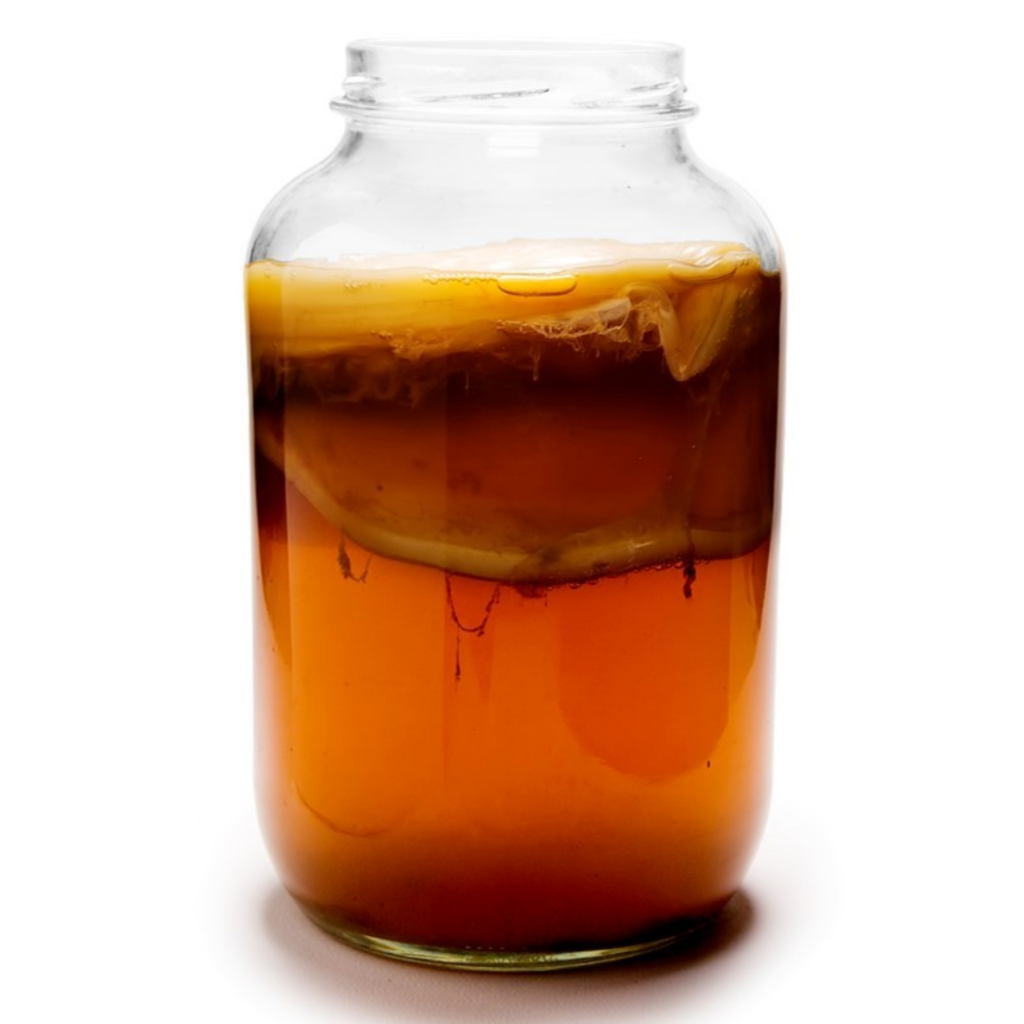Kombucha has gained much popularity among Australians in recent times. The Kombucha we are talking about here is the slightly sweet and tart fizzy drink created by fermenting a sugar-sweetened tea with a mixture of bacteria and yeast known as SCOBY (Symbiotic Culture Of Bacteria and Yeast). It has been hailed for its healing properties. Unfortunately, there is little scientific evidence to support this. Some studies which have shown potential benefits of kombucha is limited to rodents.
Kombucha is considered a source of probiotic bacteria. However, most Kombucha contains low numbers of probiotics and do not reach the levels considered adequate to achieve health benefits. If the Kombucha has been pasteurised, it will contain no probiotic bacteria.
There are also safety considerations with kombucha consumption and is not recommended for those with a weakened or compromised immune system. Incorrect preparation or contamination of Kombucha may result in excess alcohol production or cause adverse effects such as nausea, vomiting, and liver disease. In rare cases, death associated with Kombucha consumption has also been reported.
Did you know Kombucha is something entirely different in Japan?
In Japan, the Kombucha described above is known as “koncha kinoko” which means “red tea mushroom”. Kombucha translates to “kelp tea”. As the translation suggests, Kombucha in Japan is a tea made from dried and powdered brown kelp. It has a rich umami flavour and a slightly salty taste which some have described as something closer to a soup than a tea. This allows various culinary uses such as enhancing flavours of soups and seasoning dishes.

If you are looking for a reliable source of probiotics, make sure you choose one where you can identify the number and type of probiotic bacteria provided.
